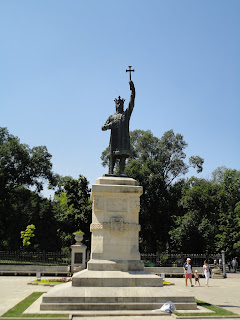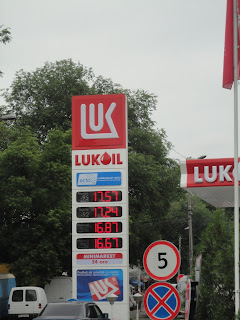Hitchhiking is extremely common in Moldova and doesn't hold any of the negative connotations as it does in America. It is quite common to see people standing on the side of the road with their hand out as a car goes by trying to find someone willing to stop. Instead of the American standard of catching a ride with a thumbs up, Moldovans tend to simply wave their open hand as a car go by, or maybe if you are standing with a group of people and don't want to scare anyone from picking you up for a lack of room you can indicate how many people plan on riding by waving that many fingers.
It seems to be a lot easier to pick up a car on roads that lead into a village as it is more likely that they will know the person in question or the person will know them so not picking them up could lead to a bad reputation being spread around the town...though on main roads it is more likely people will pass you by feeling less obligated to pick up strangers.
It is also customary to offer the driver the same amount of money for the ride as you would have paid if you had used public transport...so really it isn't fair to think of hitchhiking as a cheaper way of traveling. Though maybe more convenient as you will probably wait around for less time and if you are really lucky the car might be heading even closer to your house within the village so you can cut down on your walk from the middle of the village where the bus would normally drop you off.
(I've been trying to include a photo or a video with each blog post but I'm not really sure how that would work with this post...so I'm posting without one.)

















































